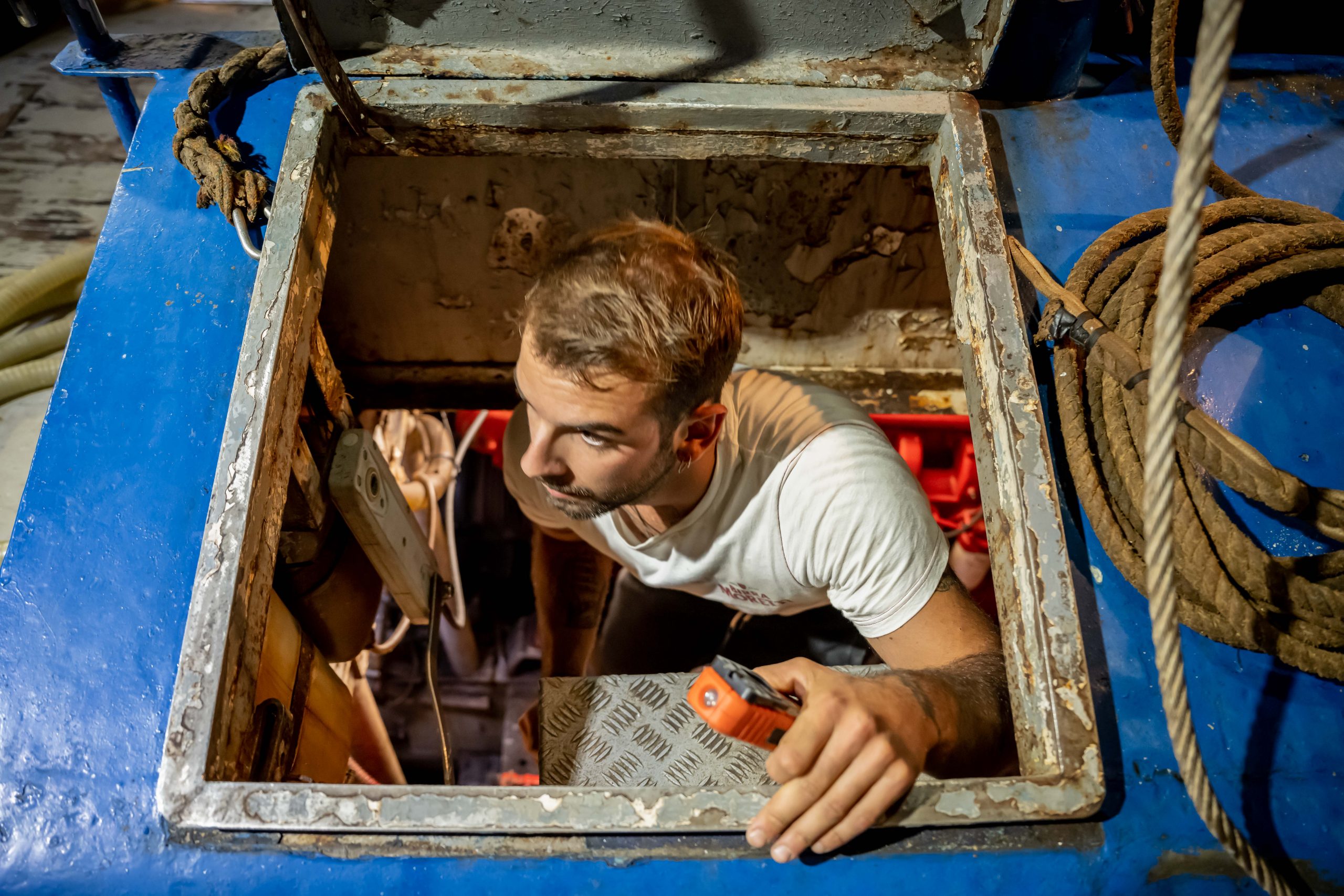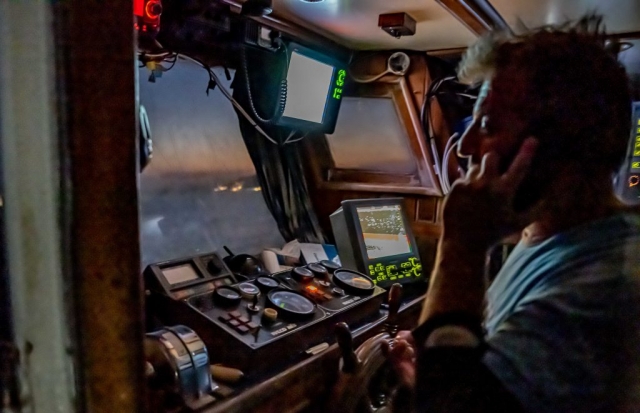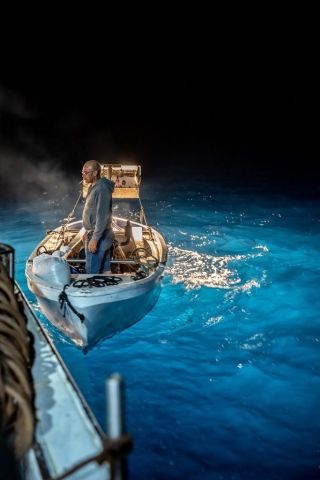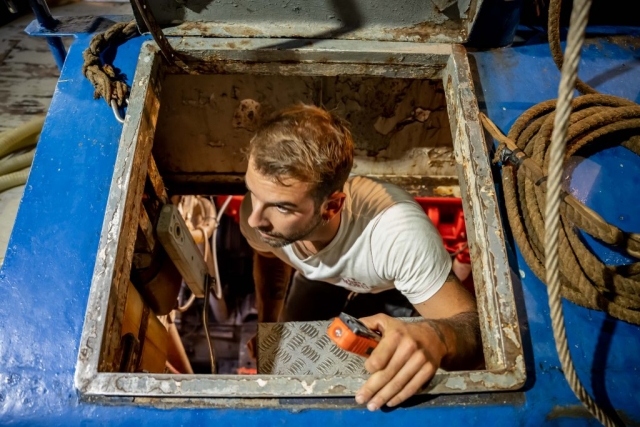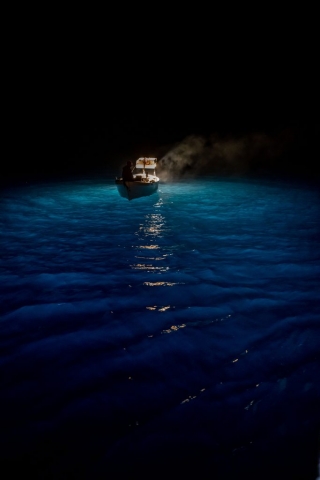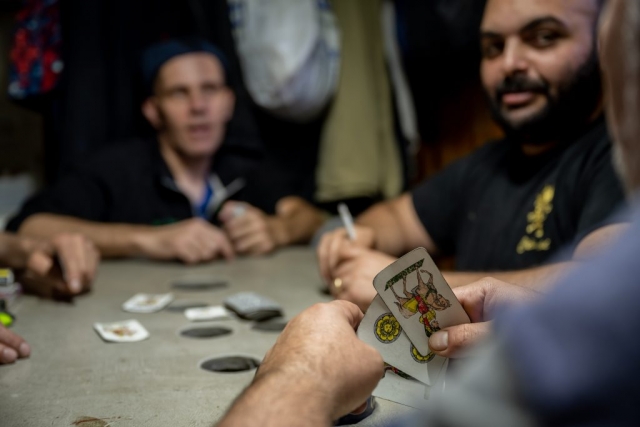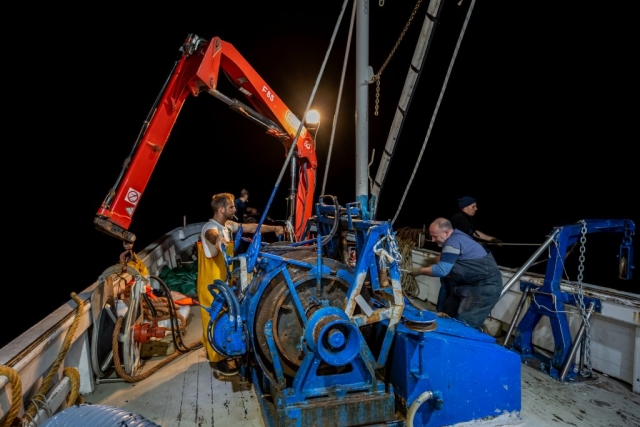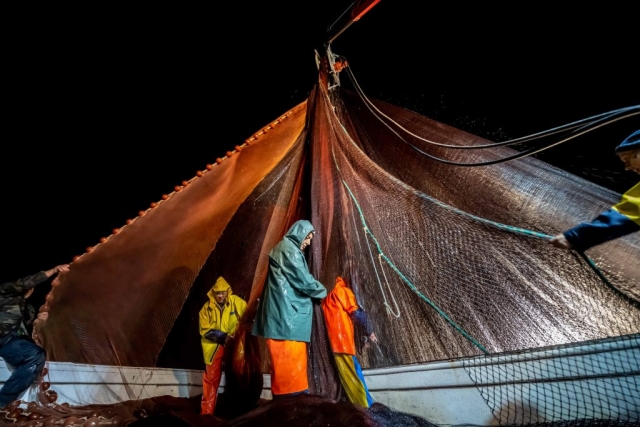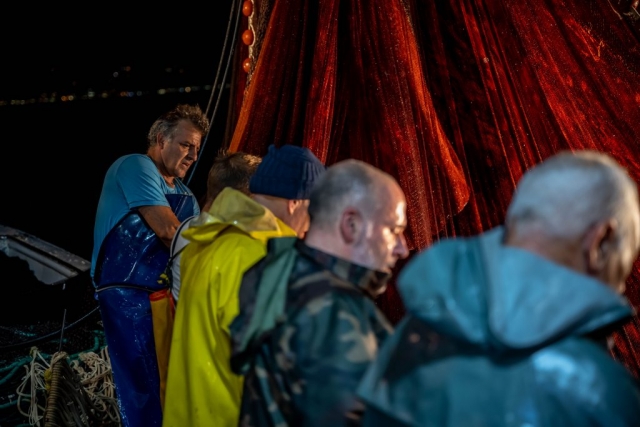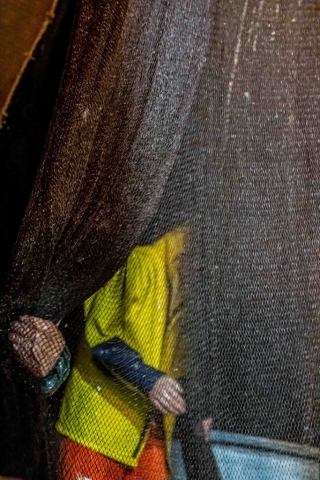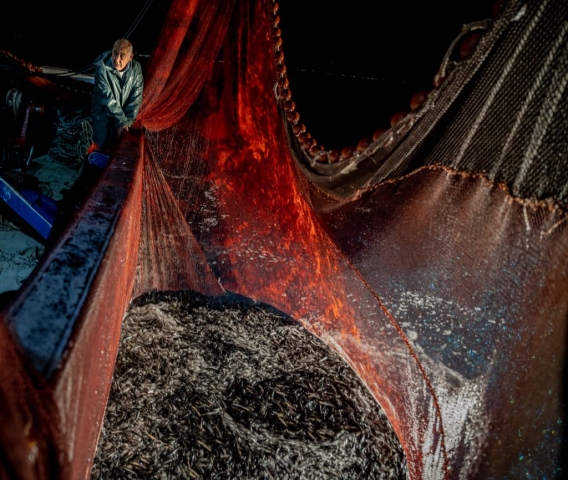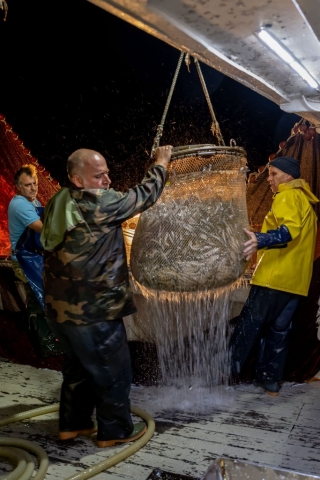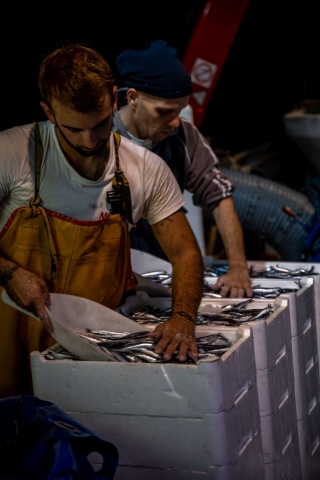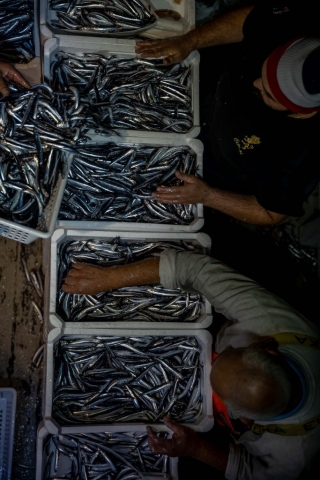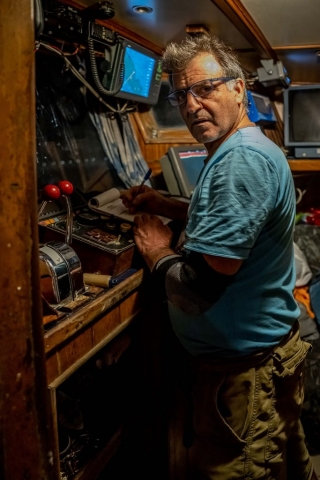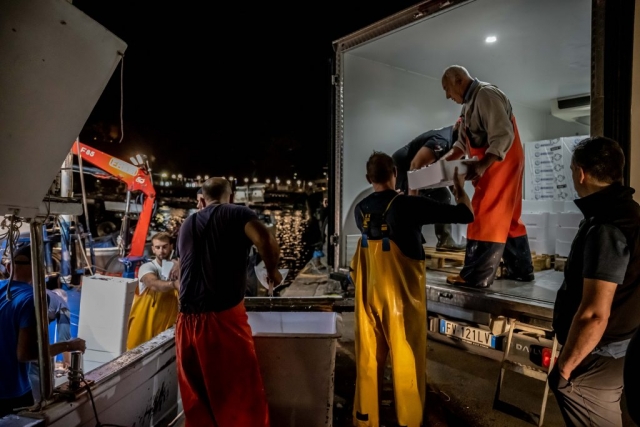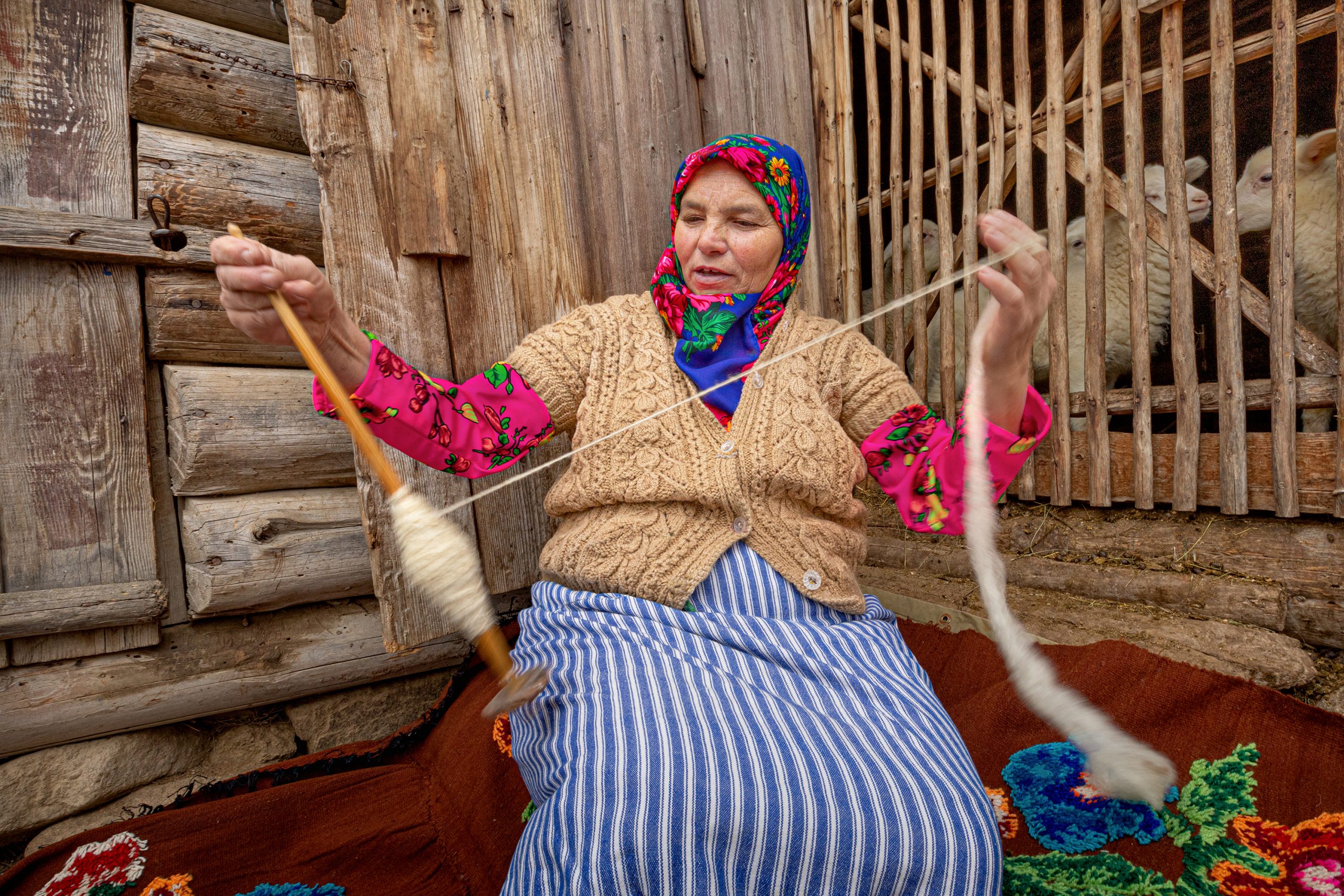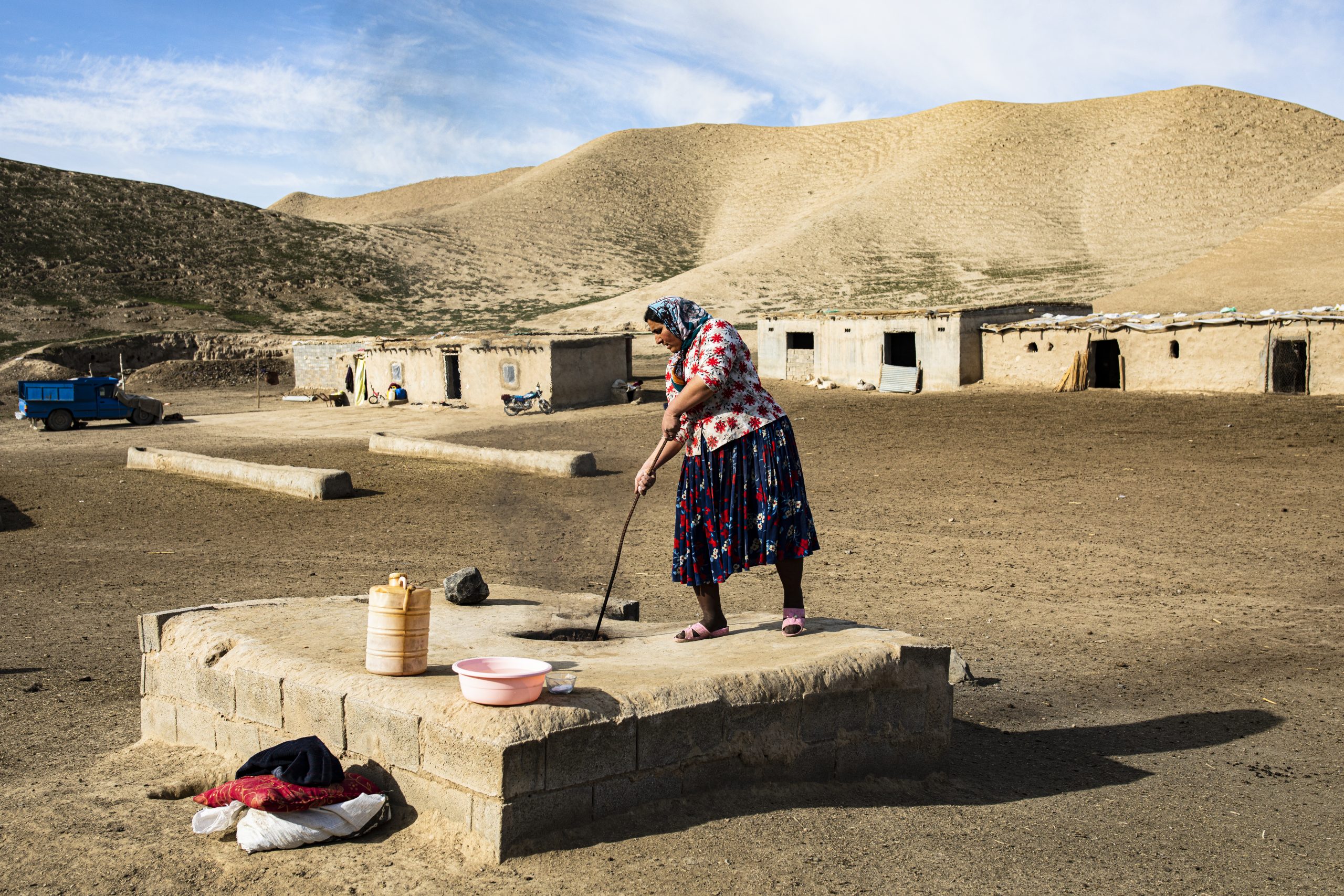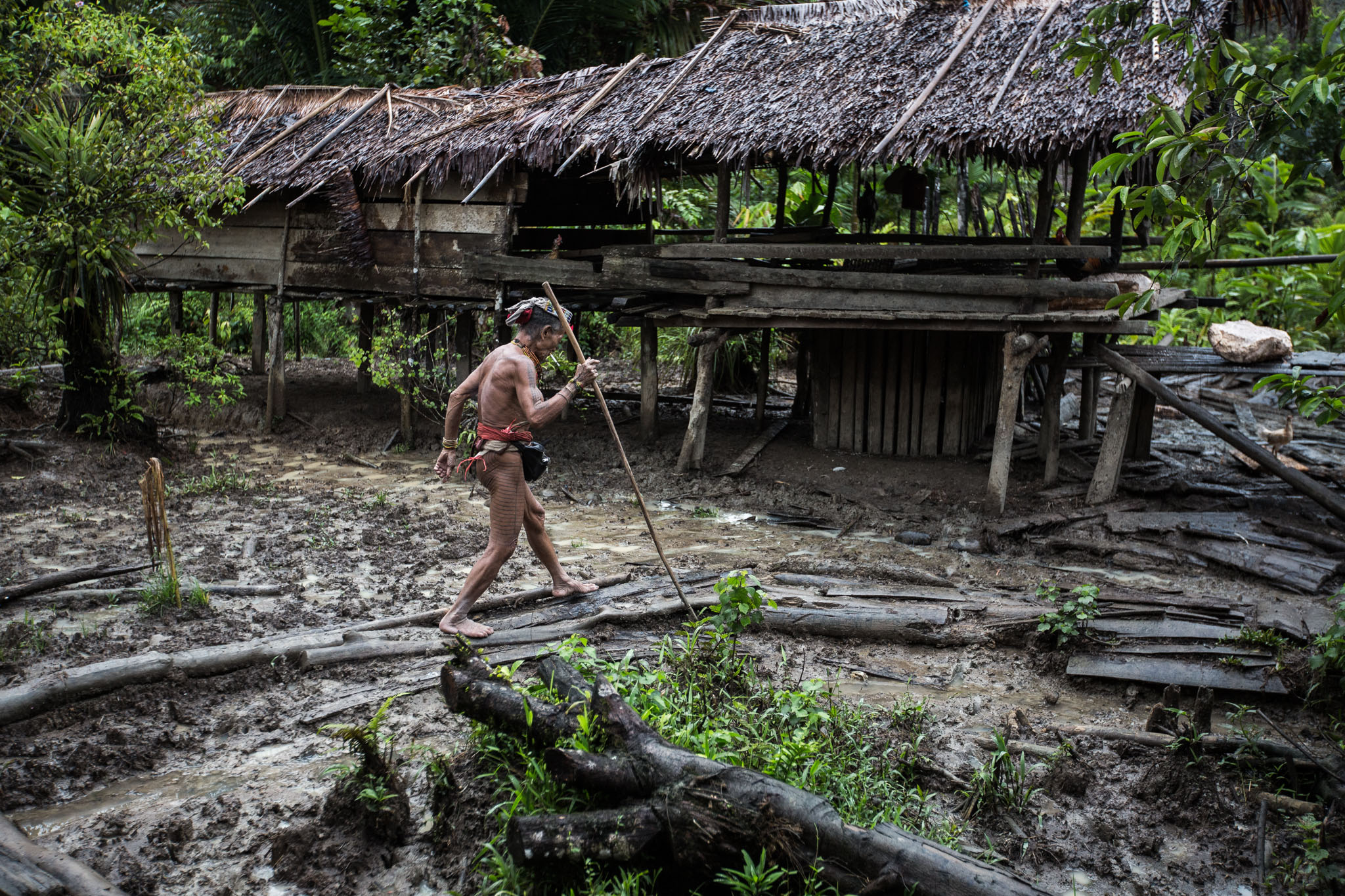Claudio Varaldi – in viaggio con la Lupa
Ways more than ‘ndarno from the shore we start … Those who fish for real and do not have the art (Dante)
Anchovies and sardines are pelagic fish very common throughout the Mediterranean; in Italy the areas most frequented by these “blue” fish are Sicily and the middle and lower Adriatic. A method to catch them, or a technique still in use today, is fishing with lampara which is carried out by a mother boat, and by 2-3 small boats or goiters that have large “lampare” installed and powered by batteries or by gas.
Arriving at the fishing spot during the night, the small goiters are lowered and the sailors, with slow strokes of short strokes, operate the lampara to attract from the seabed: schools of sardines, small mackerel, anchovies, anchovies, circuits from the strong glow of the artificial light of the lampara.
Once the various schools of blue fish have been “gathered” under their keels, the goiters almost touch each other, at this point the mother-boat comes into play with the task of throwing the purse seine into the sea: a net stretched vertically held on the surface by floating corks, while in the lower part it carries small weights that spread it out forming a mobile wall until it almost touches the bottom that slowly surrounds the fish massed in a small space.
Closed the circle, the lamps turn off the lights and come out of the net and the fish is trapped.
From aboard the mother-boat, they pull lines to close the net on the bottom and turn it into a bag full of fish that is finally hoisted on board.
Vie più che ’ndarno da riva si parte … Chi pesca per lo vero e non ha l’arte (Dante)
Acciughe e sardine sono pesci pelagici molto diffusi in tutto il Mediterraneo; in Italia le zone più frequentate da questi pesci “azzurri” sono la Sicilia e il medio e basso Adriatico. Un metodo per catturarli, ovvero una tecnica ancora in uso oggi é la pesca con la lampara che viene effettuata da un’imbarcazione madre, e da 2-3 piccole barchette o gozzi che hanno delle grosse “lampare” installate ed alimentate a batteria oppure a gas.
Arrivati sul luogo di pesca nottetempo, i piccoli gozzi vengono ammainati e i marinai, a lento moto di corte bracciate, azionano la lampara per attrarre dal fondale marino: banchi di sardine, piccoli sgombri, alici, acciughe, circuiti dal forte bagliore della luce artificiale della lampara.
Una volta “radunati” i diversi banchi di pesce azzurro sotto le loro chiglie, i gozzi si avvicinano quasi a toccarsi, a questo punto entra in gioco la barca-madre con il compito di gettare in mare il cianciolo: una rete tesa in verticale tenuta in superficie da sugheri galleggianti, mentre nella parte inferiore porta dei piccoli piombi che la stendono formando una parete mobile fino a quasi toccare il fondo che lentamente circonda il pesce ammassato in un piccolo spazio.
Chiuso il cerchio, le lampare spengono le luci ed escono dalla rete e il pesce rimane intrappolato.
Da bordo della barca-madre, tirano delle cime per chiudere la rete sul fondo e trasformarla in un sacco pieno di pescato che viene finalmente issato a bordo.


